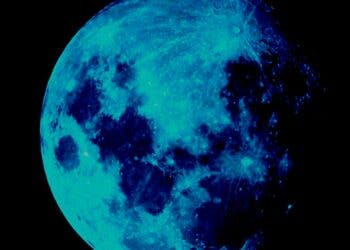Naturally blue chrysanthemums are now reality — and it’s all because biochemists at the National Agriculture and Food Research Organization in Tsukuba, Japan toyed around with the flower’s genome.

Blue flowers aren’t that common in nature. Off the top of my head I could recall… morning glory? Maybe forget-me-not’s? Those might be blue. For some reason, it’s just not very popular a color with good old mother nature. And statistically unsurprising, there are many more species that definitely aren’t naturally blue; among then, the chrysanthemum, which flower in shades of pink and red.
However, that’s about to change. Naonobu Noda, a plant biologist at the National Agriculture and Food Research Organization in Tsukuba, Japan, has coaxed a strain of chrysanthemum to turn blue by adding two genes to the plant’s genome.
Heisenberg-blue
According to a color scale put together by the Royal Horticultural Society, most flowers you think are blue are actually shades of violet or purple. Florists and breeders are keen to get their hands on new colors and varieties of plants, and blue is especially sought-after because of its rarity.
However, turning flowers blue (naturally blue, not by dying them) has proven ridiculously difficult up to now. ‘True’ blues, as described by the Royal Horticultural Society’s chart, requires a complex interplay of chemical compounds. The molecules that lend petals, stem, and fruit their colors are known as anthocyanins. These mostly consist of aromatic ring compounds that can shine red, purple, or blue depending on what extra compounds — like sugars or groups of atoms — are tied to them.
Intra-cell conditions, like wall thickness, size, or shape, also factor in, however: so simply taking the anthocyanins from a blue flower and grafting them into a new one won’t turn it blue.
Noda overcame these issues by genetically tailoring reddish chrysanthemums to be blue. First, he grafted a gene from a bluish flower called the Canterbury bell into a chrysanthemum to make it take a purple hue instead. Then, Noda and his colleagues mixed in a second gene, this one taken from the blue-flowering butterfly pea. This would dictate the addition of a sugar to the plant’s anthocyanin, taking the flower from purple to full on blue. The team believed a third gene would be required to reach this step, but chemical analyses later revealed that chrysanthemums naturally produce a colorless component that reacted with the modified anthocyanin to create blue.
Next, Noda’s team aim on creating blue chrysanthemums that can’t reproduce, so they can be safely commercialized. How commercially successful the flowers turn out to be is still anyone’s bet, given that GMOs are still a hotly debated topic. Perhaps the blue chrysanthemums will finally help swing the public vote — one way or another.
The paper “Generation of blue chrysanthemums by anthocyanin B-ring hydroxylation and glucosylation and its coloration mechanism” has been published in the journal Science Advances.






